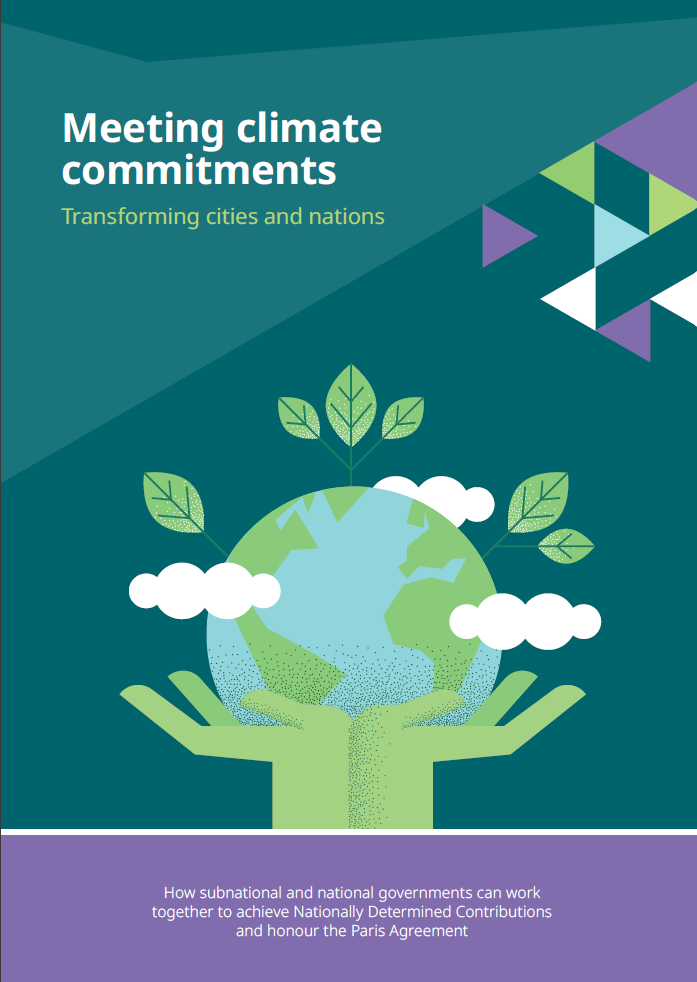chevron_left Back to News updates
19 April 2021
Meeting climate commitments. Transforming cities and nations
How subnational and national governments can work together to achieve Nationally Determined Contributions and honour the Paris Agreement







In 2015, a historic moment in the fight to tackle climate change occurred. For the first time, 196 countries (including the European Union) came together and voluntarily agreed to limit global warming by entering into a legally binding international treaty on climate change. All signatory countries to the United Nations Framework Convention on Climate Change (UNFCCC) met in Paris, for the 21st Conference of the Parties (COP21), and adopted a clear strategy to curb global GHG emissions, strengthen the ability of countries to adapt to the impacts of climate change and aim for GHG emissions to peak as soon as possible. The agreement that was adopted between signatories came to be known as the “Paris Agreement”.
Central to the Paris Agreement were three overarching goals:
Since countries have different circumstances, resources and abilities, the Paris Agreement was formulated so that each country determined their own targets and contributions to the overarching three goals. In this way, the Intended Nationally Determined Contributions (INDCs) came into effect, whereby countries communicated domestic actions towards reducing GHG emissions to reach the PA targets, and those actions taken to build resilience to climate impacts. The premise behind the INDCs was based not only on what needed to be done to combat increasing global GHG emissions and adapt to climate fallout at a global level, but on what each country could do individually to grow their economies and keep on track with developmental needs in parallel with climate change commitments. Every five years, a global stocktake will occur to assess the collective progress of all Parties to the global targets of the PA, with the first taking place in 2023.
Following national ratification of the Paris Agreement, a country’s INDC was automatically converted into a NDC. Under the Paris Agreement, each Party shall revise their NDC every five years. The Paris Agreement requires that each successive NDC will reflect both a progression beyond the current NDC commitments, and include the country’s highest possible ambition.
A robust NDC shows the world that a country takes international climate change commitments seriously.
13 tips on creating a robust NDC


